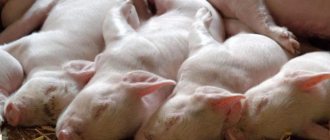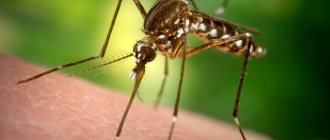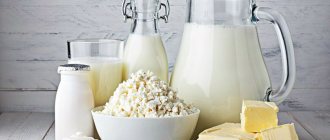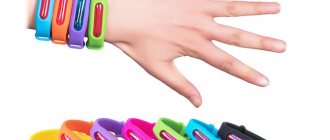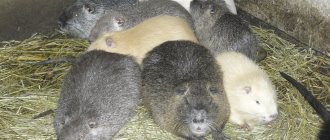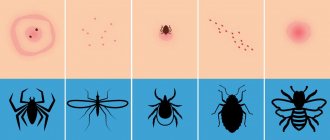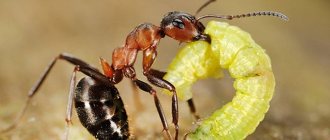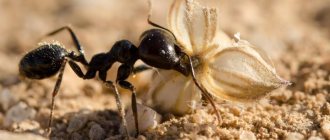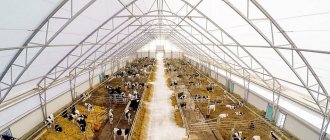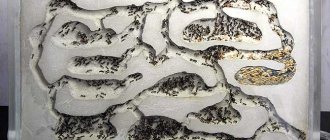A long time ago I wrote an article about sensory boxes for very young children. These were the simplest boxes, which were designed to diversify the baby’s sensory experience and develop his basic motor skills (folding, rearranging, finger grip, handling a spoon and scoop, etc.). But sensory boxes are not only a great exercise for your fingers, they are also a wonderful platform for role-playing games and themed activities. In a sensory box, you can recreate a small world with its inhabitants and characteristic environment, play out simple life situations and thereby consolidate your child’s knowledge on the topic being studied. Thematic boxes will be discussed in this article.
Such boxes will be of interest to children from about 2 years old. Perhaps something a little earlier, something later, be guided by the interests of your baby. And children over 3 years old will be happy to take part in creating sensory boxes with you.
I would like to note that if you are making a themed box for a child under 2 years old, then try not to add too many details, because... A small child needs more space to turn around, and constantly falling fences and trees can frustrate him.
Sensory box "Farm"
The Pet Sensory Bin is a great first themed box. As a rule, children simply love to feed someone, and this box is simply a blessing for the little “breadwinner”; you can pour as much food into troughs and cups as you like. During the game, you can unobtrusively repeat the names of pets, remember who eats what, who eats what helps a person, etc.
How to make such a sensory box? I used buckwheat as soil, but beans, peas, pasta, lentils, brown or colored rice are also suitable. Or you can mix several different fillers at once, it will also turn out interesting.
It is advisable not to make a pond out of real water; it risks quickly mixing with the entire contents of the box. Options for filling the reservoir are hydrogel, blue dyed rice, decorative glass stones, or yarn, like ours (only, please note that not all yarn is convenient to play with, some constantly cling to the legs of animals).
It's great if you have sheds and pens for animals from ready-made kits, they will perfectly complement your farm. But if you don’t have any, it’s okay, a shed can be easily made by cutting off one wall of a milk carton or any other suitable box. I made a trough for animal feed in the same way. I painted both cardboard boxes on top with acrylic paints in two layers, and although this did not completely hide the factory inscriptions about the expiration date and place of milk production, for my daughter this was completely unimportant, the main thing for her was functionality, and the boxes did an excellent job with this.
And, of course, you will need a set of pet figurines (Ozon, My-shop, KoroBoom), you definitely can’t do without them here
How did we play with the box?
- The most interesting thing is, of course, feeding the animals by pouring cereal into their trough. Sometimes I was even surprised at how long Taisiya hung over this seemingly completely monotonous task, but apparently the normal human desire to take care of someone takes its toll.
- They put the animals to bed, placing them in the barn for the night;
- They sent the animals to graze, drink at the pond, and even swim;
- Children came to our farm, where they enjoyed riding horses and donkeys;
- Sometimes you had to corral some naughty goats who were jumping over the fence, etc., there are a lot of options for the game, they depend only on your imagination and the age of the child.
Master class on making a “Pet Farm” model
Ekaterina Saenko
Master class on making a model “Pet Farm”
Dear colleagues! I bring to your attention a master class on making a model from plywood “ Farm ”.
I want to warn you right away that our pupil’s grandfather made us a house, a corral for horses and a fence. For which I thank him very much! I just gave these amazing buildings an aesthetic appearance. Look what I got.
Sensory box “Beach” (“Summer”)
Another great platform for role-playing games is the “Beach” sensory box. I think it could easily be called the “Summer” sensory box because swimming in the lake/sea is perhaps one of the most vivid summer experiences for children.
This time I made the pond from hydrogel (aqua soil). For variety, our resort shore is made half of pebbles and half of decorative yellow sand for aquariums. Stones can be taken from river, sea or decorative ones. Unfortunately, I didn't have any of the above on hand, so I took gravel from the playground (but, I should note, I returned it there after the game!).
Everything else is also made from scrap materials: sun loungers are made from empty matchboxes, a kiosk is made from a small cream box (painted with acrylic paints), umbrellas are skewers for canapés. Oh, yes, I also bought decorative tiny shells for aquariums.
What we played in the beach box:
- Sunbathed;
- We swam, of course;
- We bought ice cream at a kiosk (the seller, however, constantly went out to sunbathe or swim, it was not easy to catch him);
- They collected shells;
- We played beach sand (we had small children's dishes (a mug and a spoon) as molds and a scoop)
- Fleeing from a raging crocodile, etc.
DIY toy farm, or making childhood dreams come true again
Hello, dear readers of the Domovenok-Art blog! I think there are very few people in the world who are indifferent to toys (even as adults). After all, we were all once children, and many of us not only received toys from adults, but also made them ourselves. As a rule, such toys were more expensive than all others.
When children appear in the house, there is an excellent opportunity to remember past skills. You can make, for example, interesting toys from cardboard
with your own hands.
Which? Ask the children what they want; they have plenty of imagination. So our idea generator (already known to regular readers of the blog, the author of the idea of an electric elevator is our son Sasha) dreamed up a toy farm
. True, for us it’s not just a toy, but almost a simulator for a real farm (he’s developing such a business plan here, but no one will talk about it :)).
How to make a toy farm with your own hands?
We went online for an answer, but most of the farm options didn’t suit us. And then we came across an unusual cardboard toy - a small model of a farm. True, this thing was sold in an online store. But who will stop us from making our own analogue?
That's how our own DIY toy farm
. And now I will tell you how to make such a toy at home.
Sensory box "Sea"
This marine sensory jelly box is very simple to make and has a very unusual feel. All you need is water, gelatin, any dye (food coloring, gouache, liquid watercolor), and a little patience so that it all hardens well.
Don’t look at the fact that in the photo Tasya is already so big, you can safely play with jelly even from the age of 1. But the fact that at 4 the child will be happy is also true. Children really like to tinker with this unusual consistency, explore it by touch, pick holes in it, find hidden figures, and just splash on it, in the end.
I try to hide the figures in the jelly so that some of them are completely hidden from my daughter’s view (they are completely invisible in colored water), and some of them temptingly show their edges so that I really want to get them out. For starters, so to speak
A little advice: in order for the figures to show their edges and not fall in a limp mass to the bottom, some of them need to be attached to the bottom with plasticine in the position you need (this must be done before the jelly hardens).
While we are taking the animals out of the jelly, we remember what they are called and their main features. We have a set of sea animals from Happy Kin, the one with a shark and a sperm whale. The set is simply excellent, the quality cannot be faulted. Here’s another, in my opinion, good option from Wenno.
Crafts “Christmas trees”
We offer you 4 options for how to make a craft with a Christmas tree. We will make cards, applications and a New Year's toy.
New Year's card "Delicate Christmas tree"
Let's make a postcard - a transformer. When closed, the Christmas tree looks like an ordinary one, but as soon as you open the postcard, the holiday begins!
Craft “Christmas tree” from a sleeve
Crafts made from bushings are a special love! Such affordable material and so many interesting things you can make from them, for example, a Christmas tree. To do this, we will fold the sleeve in half and make cuts. The final work can be used as a Christmas tree decoration. This craft can be done by children aged 3 years and older.
You can think about what a green beauty might look like in the “Living Christmas Tree” master class. Download the finished template. Children under 4 will need help cutting out as the lines are curved.
Or make an applique from paper circles. For children under 4 years old, make a lot of blanks from colored paper and show them how to fold them. Then they can handle it themselves! As an additional decoration, we use semolina, which is so similar to snow.
For older children (from 6 years old), we invite you to try out elements of the origami technique to create your own New Year’s cards. Three craft options for your choice!
Sensory box “Arctic” (aka sensory box “Winter”)
Of course, the Arctic and winter are not exactly the same thing, but I believe that playing in an Arctic box with a child is a great way to show him life in the conditions of “extreme winter”, in the Far North. I wrote about this box in detail in an article dedicated to the thematic lesson “Arctic”, but I will repeat myself a little here so that everything is in one place.
The most burning question for winter sensory boxes is what to make snow out of? In fact, there are a lot of options, here are some of them:
- Semolina;
- Rice;
- Coarse salt;
- Cotton wool or cotton balls;
- Real snow from the street;
- Crushed foam;
- Shaving foam;
- A very pleasant consistency is obtained by mixing starch (400 g) and shaving foam (200 ml), which I used in the “Antarctica” box (see below). It is better to buy foam for sensitive skin. The only thing is that you and your baby need to prepare for the fact that after playing you will smell like your dad after shaving
The ocean here is made of jelly again. In order for the jelly to retain its shape, it will need to be kept in the refrigerator between games, but this has a big plus: during the game, your ocean will always be cool, which fully corresponds to its Arctic nature. Moreover, thanks to the jelly consistency of the ocean, ice floes (they cotton pads) stay on it perfectly.
In our games, the polar bear hunted for fish, attacked a seal, set up a den for himself,
Polar scientists who arrived on an icebreaker tried to get acquainted with the local Eskimos and photograph the animals,
The Eskimo arranged his home, rode a reindeer and also fished.
By the way, the igloo, as you probably already guessed, is made from a paper cup, with cut-up cotton pads used as snow blocks. We did it together with Taisiya.
Construction step by step
After drawing up the project and calculating construction costs, the most crucial moment comes - the construction of a goat farm. The advanced technology for installing a building frame using thin-walled steel structures of light-weight steel frames is carried out in several successive stages, which have their own characteristics.
Foundation
For frame structures assembled from standardized steel thin-walled elements, it is not necessary to make a deep foundation, which is typical for massive concrete or brick walls. Typically, a shallow strip or column foundation is installed to support the metal frame. On problematic soils, screw piles are used, the installation of which does not require special costs and time. A pile or columnar foundation is connected to each other by metal or concrete horizontal grillages or foundation beams.
The type of foundation is determined taking into account the category of foundation soil and the size of the structure.
Walls
The main purpose of the walls is to create a durable enclosing surface without cracks and protecting from snow, rain and cold wind. Drafts in the farm premises have a detrimental effect on animals; they begin to get sick, which leads to a significant decrease in milk production. Wood, which has low thermal conductivity and is an environmentally friendly natural material, is often used for wall cladding.
Please note: A frame building constructed from LSTK elements is filled with ready-made sandwich panels that do not require additional external and internal finishing.
This building cladding allows you to create comfortable conditions for keeping animals.
Roof
The traditional building material, asbestos-cement corrugated sheets, is used as the outer roof covering of the farm premises. To install a slate roof, a rafter system is made of wooden beams or metal profiles.
The rafters are installed in increments of 0.6 to 1.0 meters and rest on a pre-laid strapping beam - Mauerlat. A wooden sheathing of boards is laid on top of the supporting rafters. Corrugated slate sheets are laid with a slight overlap and secured to the sheathing with slate nails.
The building of the goat house with a metal frame made of LSTK is covered with ordinary corrugated sheeting. To prevent the appearance of condensation on the lower part of the metal roofing, an under-roofing construction film is preliminarily laid over the sheathing, which acts as a vapor barrier.
Floors
Livestock buildings typically have concrete floors that are sloped to drain slurry. However, the concrete floor is too cold for warm-blooded animals and therefore a protective covering must be placed on top:
- Wooden fine grates to prevent hypothermia in small livestock and to simplify manure removal
- Deep warm litter consisting of several layers of dry peat, straw and sawdust. When soiled, add a fresh layer of straw. This multi-layer design retains heat well, but makes cleaning the room much more difficult. The litter is changed periodically.
- Removable straw mats. This is the most optimal type of protective coating for a concrete floor, which can be easily replaced when dirty.
Any protective covering creates favorable conditions for small livestock to rest.
Window
The number of window openings in the room depends on the area of the mini-farm. As a rule, windows are located on the south side of the building at a height of 1.50 from the floor level. Window openings are filled with metal-plastic blocks with opening sashes. In the warm season, open windows provide an influx of fresh air and provide additional ventilation to the interior.
Doors
The mini goat farm is equipped with swinging double-leaf door blocks made of planks or steel sheets. To protect the inhabitants of the farm from drafts, cold winds and winter cold, insulated door structures are used. Additionally, electric thermal curtains are installed on doorways to prevent cold air from entering the room.
Heating, ventilation, lighting
Heating
According to sanitary and hygienic rules for keeping small livestock, the temperature inside the premises should not fall below 8 degrees. Lower temperatures negatively affect the health of livestock. Goat farms located in cold regions must be heated in winter.
The heat source can be:
- thermal converters
- electric oil heaters
- heating coal or wood stoves.
Ventilation
In a small goat farm with several heads, the ventilation of the premises is done through open windows. For large livestock, it is necessary to provide for the installation of ventilation equipment that ensures constant air exchange in the room. An influx of fresh air is necessary for animals to function normally.
Lighting
During daylight hours, the source of light on the farm is the window openings. The average daylight hours for livestock range from 10 to 12 hours. Therefore, it is necessary to provide artificial lighting in the premises. Particular attention should be paid to the illumination of areas where kids are kept.
Sensory box "Antarctica"
Very often, the concepts of the Arctic and Antarctica are not distinguished at all. I myself, until I started studying geography with my daughter, was firmly convinced that a polar bear and a penguin were swimming somewhere on neighboring ice floes, which is exactly how they are often depicted in pictures. Maybe, of course, for a three-year-old child there is no fundamental difference, but I decided that since it was time to educate myself, it was right to do so (so that later I wouldn’t have a mess in my head, like my mother), so we had a separate box dedicated to each pole of the earth.
This time the snow is made from starch (400 g) and shaving foam (200 ml); for the iceberg, I froze ice in a bowl in advance. I wasn’t able to come up with a lot of different details in Antarctica, which is essentially a wasteland, but it was still interesting to play (and more than once). Plus, we liked just messing around in the pleasant snow-starchy mass.
- Our penguins and seals fished, and also rode off an iceberg and jumped into the ocean at full speed.
- The little penguin kept getting lost, and then, with our help, he found his way to his grandmother.
- Scientists and travelers arrived in Antarctica. To shelter from the icy winds, they hastily built themselves a shelter from refined sugar.
And this, by the way, is a sensory box “on the road”
Sensory box "Dinosaurs"
Dedicated to all dinosaur lovers - the world of dinosaurs in your home, almost like the real one. I will not go into detail and again describe all the components of the box, I think, having familiarized yourself with the previous copies, you have already perfectly grasped the essence.
We have already made this sensory box together with our daughter. She was almost 4 years old at the time, and she enthusiastically set about creating the box, throwing in her own design ideas. At that time, we had already repeatedly read an absolutely masterpiece book about dinosaurs - “Such Different Dinosaurs” (there were others, of course, but this one is beyond competition), and I think it was thanks to this book that scenarios for games in the sensory box poured out of my daughter like from the cornucopia: and how predators attack herbivores,
and how herbivores lay eggs, and oviaraptors kidnap them,
and how plesiosaurs, protruding from the water, grab pterosaurs flying by, etc. Oh yes, and, of course, how dinosaurs become extinct. In general, we got very rich games with this box.
Well, just in case, a few examples of sets of dinosaur figures: Ozon1, Ozon2, KoroBoom.

